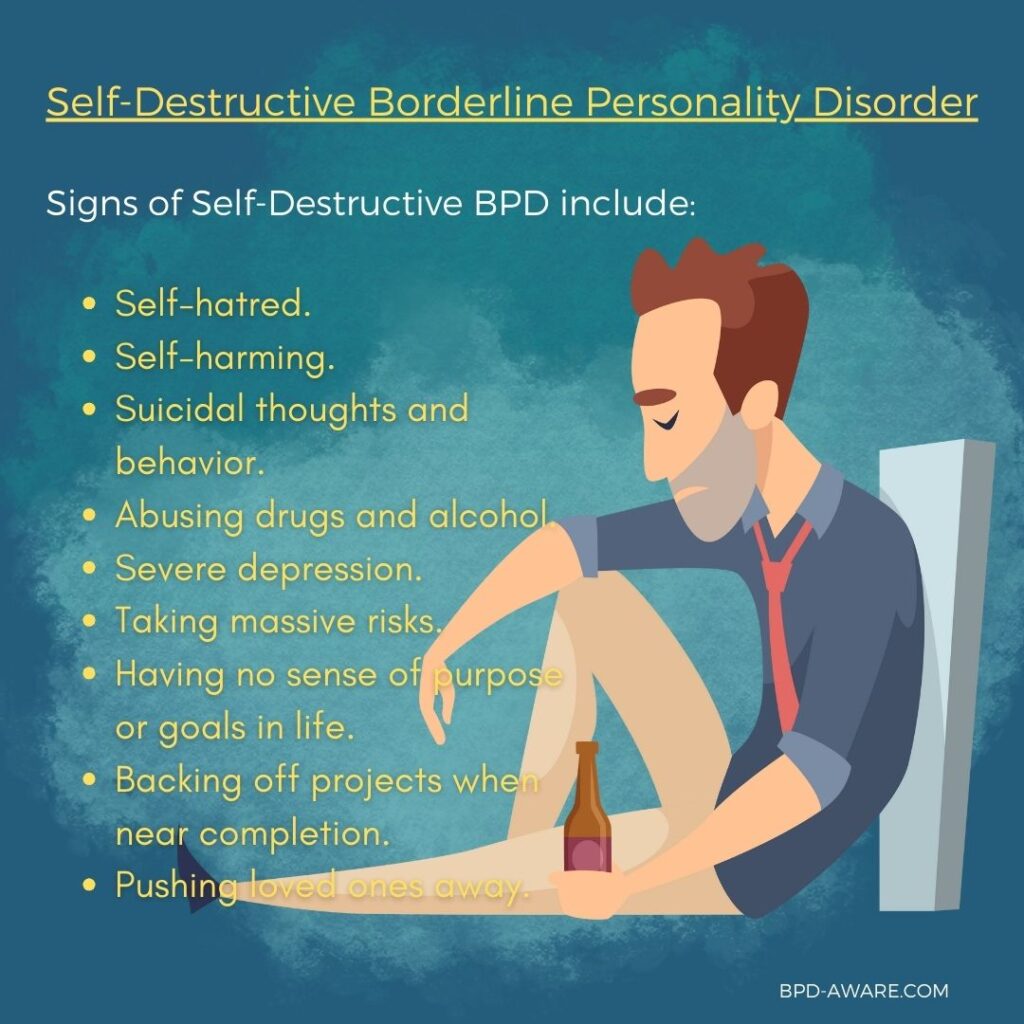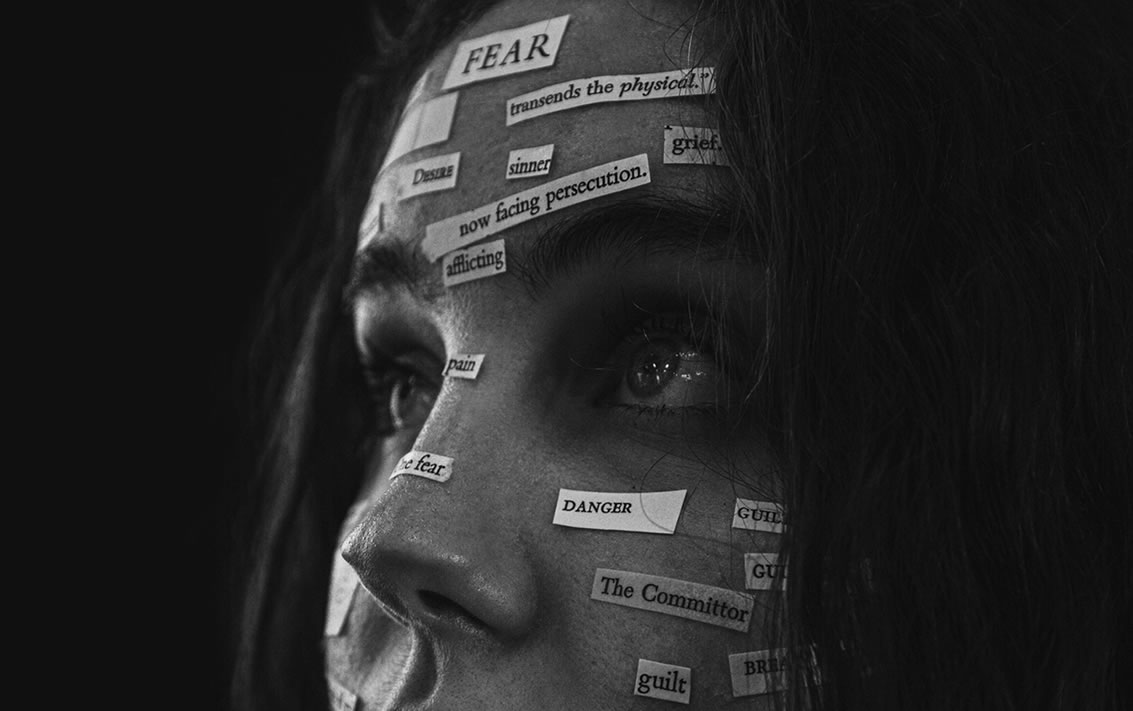Self-Destructive Borderline Personality Disorder (BPD) is one of the four subtypes of BPD. Someone with BPD may display symptoms of one or more subtypes at any one time. It’s rare to fit perfectly into any one subtype of borderline personality disorder. Sufferers may also shift between various subtypes throughout their lives.
People with Self-Destructive Borderline Personality Disorder have many of the symptoms of general BPD, as well as an intense feeling of self-loathing/self-hatred. This is what drives self-destructive behavior; it’s a very literal desire to destroy the self. This includes behavior such as self-harming and suicidal thoughts and actions.
What Are the Signs and Symptoms of Self-Destructive Borderline Personality Disorder?
- Self-hatred.
- Self-harming.
- Suicidal thoughts and behavior.
- Abusing drugs and alcohol.
- Severe depression.
- Taking massive risks.
- Having no sense of purpose or goals in life.
- Backing off projects when near completion.
- Pushing loved ones away.
Problems People with Self-Destructive BPD Face
One of the main problems people with Self-Destructive Borderline Personality Disorder face is having any sense of self-worth and stability in their lives. Due to the nature of the disorder, it is challenging to build a career or stable relationships.
Self-Destructive BPD can also be misdiagnosed as bipolar disorder due to the up-and-down nature of the mood swings sufferers experience. This can lead to an improper treatment program that offers little improvement and possibly even causes harm. As the treatment doesn’t work, this can make someone with Self-Destructive BPD feel more self-hatred and like they can’t be helped or don’t deserve help.
It’s crucial when seeking treatment for Self-Destructive BPD or Bipolar Disorder that you thoroughly discuss the symptoms with your therapist and the possibility of a misdiagnosis.

Treating Self-Destructive BPD
There is no cure as such for Borderline Personality Disorder; however, therapy can provide the tools to cope with the disorder, while carefully prescribed medication may help lessen the symptoms.
The two most common forms of therapy used to treat Borderline Personality Disorder are Dialectical Behaviour Therapy (DBT) and Cognitive-Behavioural Therapy (CBT).
DBT provides the tools a person may need to improve interpersonal skills, mindfulness, distress tolerance, and emotional regulation. CBT helps people with Borderline Personality Disorder reframe negative thought patterns and react with positive actions.
Personal Accounts of Living with Self-Destructive BPD
“I began self-harming at the age of fourteen. It fulfilled so many things I felt like I needed at that time. I was convinced that I deserved to feel the pain of cutting my flesh. The scars gave me a form of protection; no one would ever reject me because they’d never want me in the first place. Most of all, it gave me a feeling of control—something I didn’t have in any other aspect of my life.” – T Cephus.
“My self-destructive behavior typically took the form of binge eating and abusing alcohol. I felt horrible all of the time: tired, bloated, and sick. But it was the only way I knew how to cope with the feelings I had inside. It was only with therapy that I was able to break this cycle and become healthier both physically and mentally.” – R Payne.
“Whenever the slightest thing would go wrong in my life, my mind would go straight to suicidal thoughts. It seems silly now, but something as small as receiving the wrong item from an online store would trigger me hard and make me think, ‘What’s the point? I might as well be dead. I was so all over the place mentally that it was impossible to think straight.” – A Marshall.
Sources, Resources, and Further Reading
- Borderline Personality Disorder and the Danger of Self-Destruction: https://www.psychologytoday.com/us/blog/the-complex-diagnosis/202208/borderline-personality-disorder-and-the-danger-of-self
- Self-Destructive Borderline Personality Disorder Symptoms: https://launchcenters.com/self-destructive-borderline-personality-disorder/
- Understanding Self-Destructive Borderline Personality Disorder: https://www.optimumperformanceinstitute.com/bpd-treatment/self-destructive-borderline-personality-disorder/
















